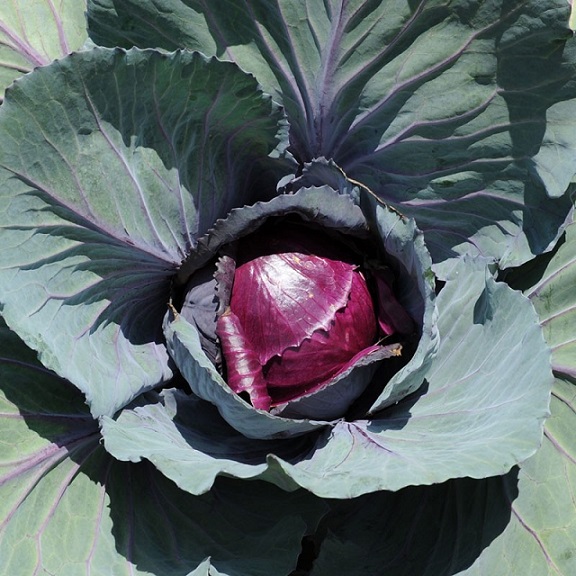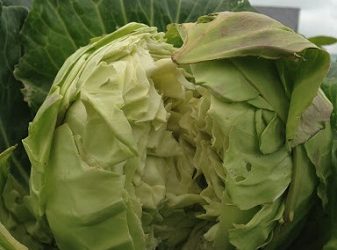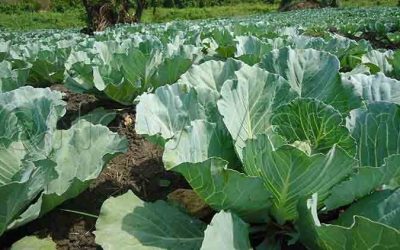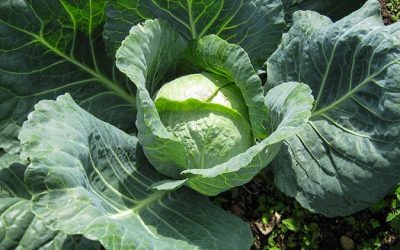
Cabbage is propagated by seeds, which are sown in the nursery bed and later transplanted after 3-4 weeks to rows of 60-75cm apart and 45-60cm within the rows.
Wider spacing (75 x 60cm) is usually adopted for late maturing cultivars (up to 130 days) and closer spacing (60 x 45cm) for early maturing cultivars (up to 55 days).
Head size can be regulated by plant density. Direct seeding followed by thinning is not normally successful in the tropics.
Seed Rate: 300-500g/ha depending on germination percentage.
Before transplanting, water nursery bed thoroughly 3-4 hours in advance to minimise damage during lifting of seedlings.
Preferable, remove seedlings separately, never pull as this may damage feeding roots.
Cabbage is a heavy feeder of Nitrogen (N) and Potassium (K). Organic matter and Phosphorus (P) and K fertilisers should be applied before transplanting and a dressing of N fertiliser is applied about four weeks from transplanting and three weeks thereafter.
Rates are 5-10g/plant (185-370kg/ha) of CAN and 200 kg/ha DSP. Cabbage benefits from heavy doses of well decomposed organic manure but there is need for balanced application of NPK.
Weed control
Cabbage is shallow rooted and care should be taken not to damage roots in the field as this would encourage entry of fungi and bacteria.
Cabbage is also a poor competitor of weed thus it should be protected. Avoid excessive weeding since this may lower yields due to water loss through evapotranspiration and root damage.
Mulching
It may be beneficial in weed control, besides preserving moisture.
Irrigation
Irrigation should be done whenever necessary. It is important to note that cabbage is relatively shallow rooted, thus may need regular watering if rainfall is not adequate.
Critical water requirement stage for cabbage is at head formation.


